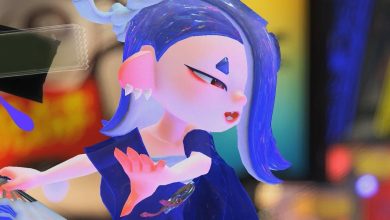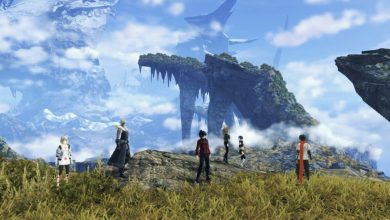Growbot Review (Switch eShop) | Nintendo Life

Growbot is a good old point-n-clicker in the classic style: screen-sized scenes to be pixel hunted, each one providing some combination of puzzles, items for solving puzzles, world-building, and story progression. The loop is “solve puzzles, unlock more puzzles”, with the added pay-off of the explorable world growing as you do so.
The world in question is a robo-horticulturalist crystal space asteroid sort of jam, with a little scuttler called Nara being the chosen hero, saving the universe despite the uncertainties of youth
Growbot does all the basics, following the long-established routine of cursor-pointing, inventory cataloguing, and dialogue options. Its little innovations are the clear division of your inventory into “keepables” and “consumables” – which gives some structure to help minimise the try-everything-with everything moments – and a colour-coded cursor that neatly shows whether something’s interactive or whether the game is busy for the moment.
Verbs are perhaps a relic of those old post-Zork hangover days now, and Growbot is another game where you just click away, and “do the thing with the thing” is the only verb you have. In theory that’s fine, but in practice it contributes to the sense that you’re just clicking to turn the page of a story with the “turn page” button in a different location on each screen. This isn’t helped by the fact that many of Growbot’s puzzles involve bringing together made-up items, defined entirely by their interaction. For instance, an early puzzle has you put some jam into a teleporter so that a “holoprism” is sent back out of it. You then insert some “light pollen” into that holoprism and… we suppose Bob’s your uncle?
But if there’s a balance to be struck between puzzles, items, world-building, and story, Growbot knows where it’s putting the emphasis: a primary, music-based puzzle type and a world brought to life almost entirely by the game’s art. The writing is often baldly functional, getting right to the point of what item is needed without faffing around with character and conversation. The visual art and sound and music, though, are joyful and capture the imagination. It’s sadly superficial, but it still has some wonder about it.
The musical puzzles, meanwhile, stir lovely memories of Loom, the innovative gem from Lucasfilm Games that did a lot to set up the two Monkey Island masterpieces. Nara collects new notes that can be played through an interface called the “flower arranger”. Keys needed to progress at certain times can be made by building a note sequence that matches the “shield” that blocks your path. It’s uncomplicated but works smoothly, asking for something of a musical ear but not much else.
One challenge for the graphic adventure has always been how to meld puzzles, which are essentially abstract snippets of logic, with telling a story, which essentially needs to flow, without stopping to do sudokus ’round every corner. Growbot makes its most common puzzle part of the world, with its flower-based music mechanic, and the art makes everything look like there’s a story behind it. Unfortunately, that appearance of story is only skin-deep, and the puzzles hang oddly on the bare frame of a plot. Outside the musical sequencing, there are some infuriating blockers – especially when doing contrived things with contrived items for contrived reasons. That Goldilocks sweet spot of difficulty that makes the player feel in control proves too elusive, but there’s melodious, mechanical enjoyment to be had here if you’re not fussed about story.




